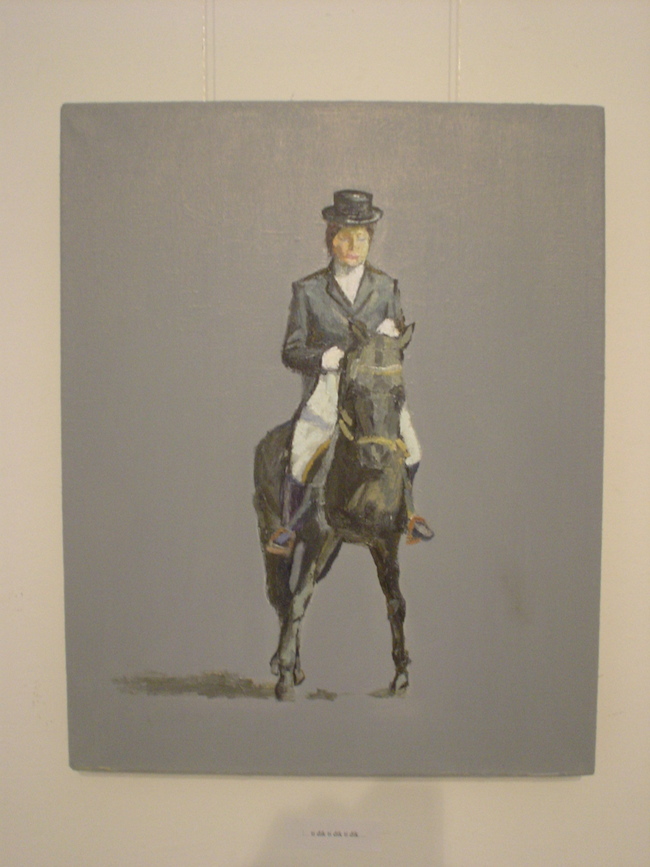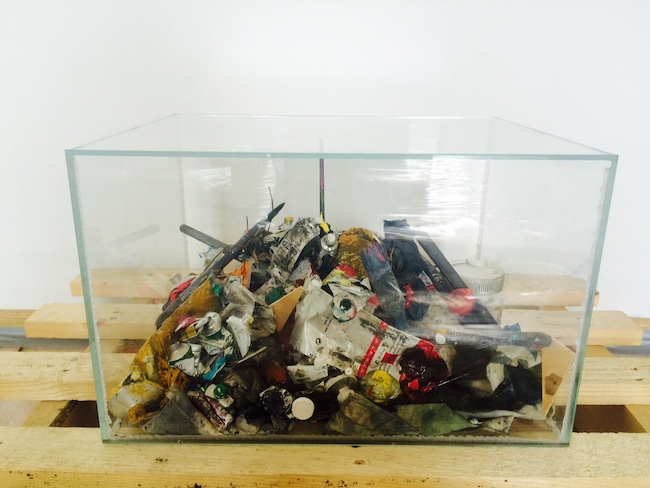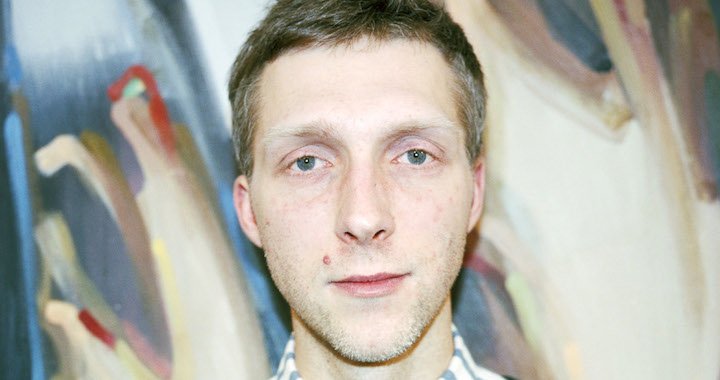
Painting About Paintings
An interview with Lithuanian fine-art painter Andrius Zakarauskas
18/10/2016
The American conceptualist John Baldessari once said: “Conceptual art isn’t about art that had a concept, but about interrogating the concept of art”. In the context of conceptual art, the next-generation Lithuanian artist Andrius Zakarauskas (1982) is a shining example, right here in the Baltic latitudes, of someone who pointedly thinks about the medium itself. At the foundation of his conceptual painting is painting itself. In his works, he singles out the positions of all three – the painting, the brushstrokes, and the painter – in the context of contemporary art.
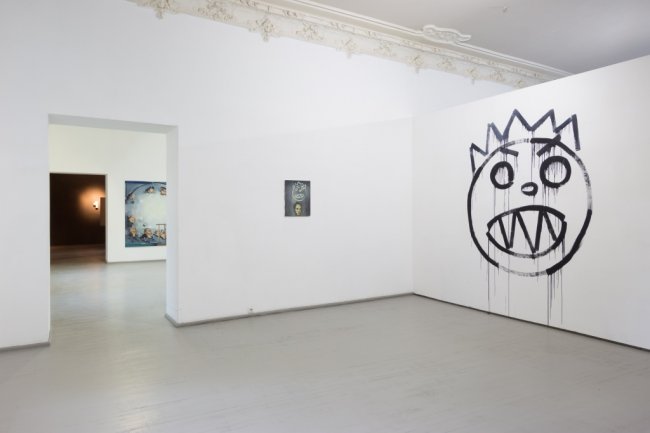
Andrius Zakarauskas' exhibition Ligaments at Gallery Vartai. Vilnius, 2016
Zakarauskas looks not only at the paragraphs that have been written on the history of painting, but also at his own body of work completed over the last decade. At the beginning of this year, the Vilnius gallery Vartai presented a solo show by Zakarauskas titled “Ligaments. Ten years with Galerija Vartai”, in which the artist tried to grasp the links or consonances with his earlier artworks, the relationship with earlier paintings. “It was kind of a constant repainting of paint. What was created and painted earlier, now is repainted, reconsidered. In this way, I portray the act of painting itself. It is not a repetition of it all,” is how Zakarauskas expressed himself in the announcement for the show.
It was at Vartai, during a gallery-organized group show of emerging artists, that Zakarauskas’ works were singled out by a notable Portuguese collector. The collector bought several works by the yet-unknown artist for almost next to nothing; he was amused that these young artists were doing the exact same thing that many world-famous artists were doing. This kind of recognition gave the gallery the impetus to send the young artists to what was then known as ViennaFair, where they received larger exposure. What followed for Zakarauskas were exhibitions in Germany, Italy, Austria, the Netherlands, and Poland. His works have been shown in the fair labyrinths of ArtCologne, Cornice Venice, Scope Miami, ViennaContemporary, IYA Paris and Art Dubai. In terms of awards, in 2009 Zakarauskas received the Young Painter Prize in Lithuania, which singles out emerging Baltic painters. Zakarauskas is represented by the Andreas Binder gallery in Munich, gallery Vartai, and just recently, Rooster Gallery in Vilnius.
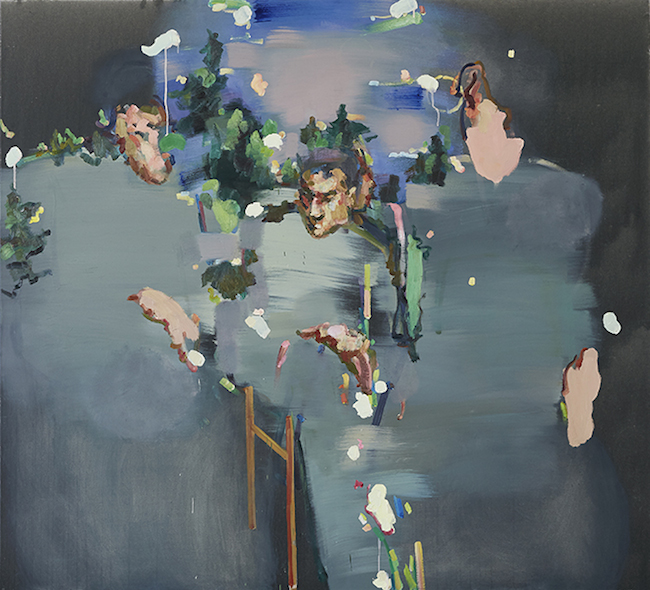
Andrius Zakarauskas. Etudes, 2016. Acrylic, oil, canvas, 160x170 cm
From October 20-23, along with other Rooster Gallery artists, Zakarauskas will be participating in the YIA (young international artist) Art Fair in Paris. Next year he will participate in Art Dubai, and he also plans to have a solo exhibition in Vilnius; and, if everything goes well, perhaps a show in Munich, at the Andreas Binder gallery.
Andrius Zakarauskas’ studio is located in the former Vaidilos teatras theater building. Now it is home to a theater school and studios for artists and architects; there’s also a Vilnius art gallery in the foyer, which has been there since the 90s. A beautiful example of the Gothic Revival style, behind its brick walls the structure is still in possession of some lingering signs of Soviet-era aesthetics – as we wind through the hallways to Zakarauskas’ studio, at one point the artist points to a section of wall that has been padded and exclaims: “And here we see...a sofa on the wall!”
Upon entering the studio we are greeted by the sweet and dizzying smell of turpentine and oil paints, which Zakarauskas immediately dissipates with fresh air from a window that he opens up...and then supplements with the smoke from a just-lit cigarette. “I moved in here just six months ago*. It’s perfect – there is both direct and indirect light, which is imperative for painting.”
,%20oil%20on%20canvas,%2040x50,%202016.jpg)
Andrius Zakarauskas. Bodybuilding (both), 2016. Oil on canvas, 40x50 cm
Could you explain how you “plan out” each work – do you begin with a sketch, or is that unnecessary?
I create a kind of schematic to find the composition. I usually choose the horizontal format because I believe that our eyes and perception have become very acclimated with the format of the television screen. It’s the format of our generation.
Over the last few years, I’ve deliberately begun to use more acrylic. I use it for the background, and only then do I start with the oils – in this way I create a distinct gap between these paint materials.
What made you reconsider your previous use of paints?
A couple of years ago I realized that there’s something very depressing about my oil paintings. Everything seemed stuck in oil. Because what we see in a painting is not what we’re really seeing – brushstrokes and paint. Oils are 2000 years old, acrylics are 100. The oils were creating their own story, and I understood that it has to be made more interesting. Perhaps it would be interesting to make an even more distinct gap – maybe even as far as 3D painting. In my latest works, I use a lot of water with the acrylics, thereby achieving depth; but in the center, in the most important part of the work, I lay down more oils.
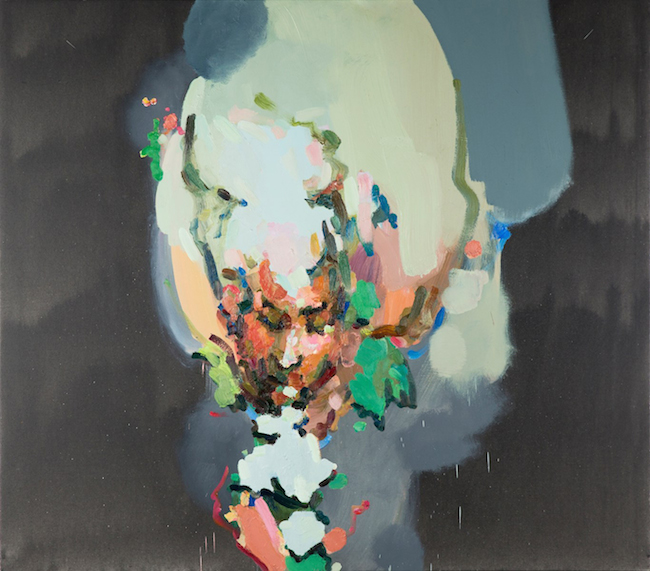
Andrius Zakarauskas. Do It Yourself, 2016. Acrylic, oil, canvas, 110x125 cm
Your painting is about painting; that seems quite clear. But how do you select the motifs for your work? Where do you find the stories?
Usually, the stories are in me. They are linked to the history of painting, and in them you can find references to, for instance, the works of Edvard Munch or Francis Bacon. In addition, the stories are linked to my own earlier painting.
Mostly they are stories about the painter who is creating his own story on the canvas, his own landscape. His canvas is his space, and he can use this space as he wishes. For example, I have a piece “Do it Yourself” (2016) in which I wanted to show how a person can sort of “create” himself from the oils. Once he has “created” himself, he is sort of removed from it – you see splashed paint, aggressive movement. That man was the painter who finally turned into paint again.
Andrius Zakarauskas. Ti dik,ti dik,ti dik. 2005. Oil on canvas, 40x30 cm
Has your painting always been about painting?
While studying at the academy, large-format canvases and abstract-expressionist painting was all the rage. At the time, I decided to go down another path and work with small formats. I made nice, small works that one could hang...I don’t know...in the kitchen. These were romantic pieces about love, loneliness, women. They depicted girls standing somewhere, waiting for something… My girlfriend riding a horse.
But then I saw the works of Latvian painter Jānis Avotiņš. They had something in common with what I was doing and wanted to do. He was already famous then, and I thought – No, I have to do something else! So I turned to larger formats, and the girls in my paintings were replaced by painters. One of the first motifs in my works was me, standing in an empty gallery or next to works.
,2016,acrylic,oil,canvas,145x160.jpg)
. Andrius Zakarauskas. Synonym of Remembrance, 2016. Acrylic, oil, canvas, 145x160 cm
Is it important to you to look back at your works? To compare the ways in which you have worked?
Yes, it’s very important. One of my exhibitions, “Synonym of Remembrance” (2016), is about that. It’s about remaking. Throughout the works there appears a portrait of a painter, one with which I repeatedly worked with by introducing it into new story contexts, looking for new accents. I think a lot about how I can expand my existing works, extend them.
In the “Synonym of Remembrance” series, there’s a piece in which the painter holds a small flower. It symbolizes nature, which is so very important to him, but the background symbolizes remembrance – everything that he has accomplished in his creative career, all of his experience.
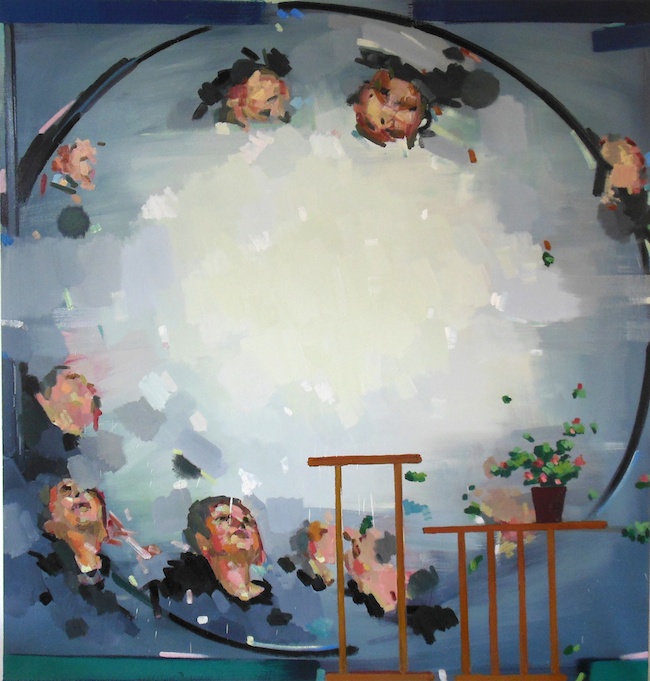
Andrius Zakarauskas. Pelargonium, 2015. Oil on canvas, 180x170 cm
Who do these faces belong to, the ones we see in your works?
At first, it was me, but there’s no longer any special significance to it. I just want the viewer to understand that he is the painter.
My 2015 work, “Pelargonium” [the Latin for geranium], came about while I was painting in a church. It’s a beautiful baroque church with a cupola. It houses a great deal of painting history. In this piece there are a number of references to the structure of this cupola, and to the frescoes depicting the Stations of the Cross, but there are also geraniums and those plant stands that where common in Soviet interior design. In these details one can find the story of me, about the fact that I was born in the Soviet Union. It is a self-portrait, although there isn’t one main character in the piece. The main thing is light. The painter creates his own space on the canvas, just like the Creator – God. Just don’t get the impression that I think that I am this God – other painters are. I, myself, am not in the painting.
When looking at your works, it’s clear that they were made by a man. The masculinity can be clearly sensed…
The paintings are about a painter who is a man. They are also about me, as a man, and that comes naturally. That aggressive male thing – masculinity is important.
When I first showed my works at ArtCologne, I sold many. It’s a known fact that the public at these kinds of fairs has a high percentage of homosexual men. That made me think… Why is that? There’s nothing there that would speak directly to homosexuals… In addition, homosexual artists usually don’t create such aggressive things; their works are rather more narcissistic. I don’t know, but I think about that…

Andrius Zakarauskas. Wallscape, 2016. Oil on canvas, 160x175 cm
Do you remember the moment when you decided to become an artist?
My mother says that I liked to draw as a child, but I believe that all children like to draw!
She took me to an art school. I was ten years old, and at that time I was more interested in new friends and cigarettes. However, when I was 15 or 16, I took up drawing and painting at home; not at school. It could be that I was inspired by the many exhibitions that our teachers took us to see.
Kaunas, which is where I grew up, has a strong tradition of abstract expressionism. One of my first teachers was a very expressive painter, and he directed me towards that as well. He’d place a bottle, an apple, and a piece of fabric on a table, and then he’d taught me to create something expressive from this still-life.
I remember when I came to Vilnius for my entrance exams, I drew still-lives just like that. I’d do a salami sandwich with a small soldier in the background – in expressionism! You can imagine how the teacher reacted! That’s when my real lessons began… As if the teacher in Kaunas had made a fool of me.
Andrius Zakarauskas. Painter’s landscape, 2012
Have you tried any other mediums besides painting?
I’ve always known that I wanted to paint. Here [points out] is my sculpture that I made in 2012. It’s a painter’s landscape.
Do you paint every day?
I like to adhere to a certain discipline. I try to get up and, if there’s nothing else I have to do, go to the studio. I like to work the first half of the day, then have lunch and, perhaps, return to the studio. I need to prepare, find the right music, atmosphere.
Every so often one hears that painting is a dead medium… What would you say in return?
Painting will always endure. In the crazy world-level art market, it is so highly valued that no one will allow it to lose its importance.
Yes, in the 80s and 90s there was a re-conceptualization of painting. Luc Tuymans, Wilhelm Sasnal, Marcin Maciejowski – they rethought painting and created today’s painting. They see painting as a way of thinking.

Andrius Zakarauskas. Lern Malen, 2008. Oil on canvas, 145×160 cm
What sort of position do you see for yourself in the painting of the future – both locally and on a world level?
Well, when I start making a new exhibition, or when I’m participating in any art competition, or even just showing a new artwork to a close friend, I am already taking a position. The viewer is extremely important to me. Those three components – the painter, the viewer, and the painting itself – fulfill and complete the resultant painting. As in my last painting, the viewer is the main character; the action that he or she perceives is only the reflection of the landscape. My main aim is to be recognized as a Lithuanian painter, since the Lithuanian painting school is very important and essential to me. I would be more than satisfied if I could affect or make an impact on the Lithuanian school of painting, and I would very much like to introduce my perception of it to a global audience.

Andrius Zakarauskas. Photo: Visvaldas Morkevičius
*This conversation took place in June, 2016
